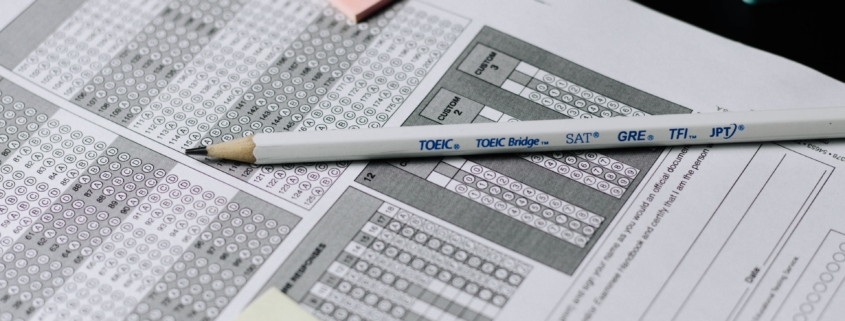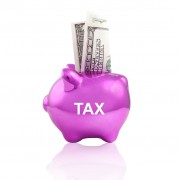5 Best Practices for Pre-Employment Assessments Hiring Managers Should Be Tracking
The hiring process is oftentimes littered with pink slips because of unreliable gut instincts about new hires.
Pre-employment assessments are excellent tools that provide a wealth of data, and much needed objectivity, when used correctly. But those same pre-employment tests can perpetuate bias if hiring managers aren’t paying attention to the whole story.
In this post, we’ll explain how employee assessment tests can help you make successful hiring decisions. We’ll also tell you how to measure an assessment’s validity and outcomes to prevent pre-employment assessment bias.
“one-quarter of the people hired by the traditional methods of interviewing and reviewing resumes will fail.”
Pre-Employment Assessment Tools for Better Hiring Decisions
According to Dianna Podmoroff, author of How to Hire, Train, and Keep the Best Employees for your Small Business, “one-quarter of the people hired by the traditional methods of interviewing and reviewing resumes will fail.”
According to Gallup, turnover costs businesses $1 trillion a year—and that’s just voluntary turnover. Clearly, businesses need to increase their employee retention, and the hiring process is the first place to start. Pre-employment assessments are excellent tools that can help you make more successful hiring decisions.
Pre-employment assessment tools are tests that can measure a variety of candidate attributes. Hiring managers can use pre-assessments to know if a candidate really has the job skills to perform well in the role. Leaders can use a hiring assessment test to reduce theft and increase workplace safety. Pre-employment assessments can help you hire people based personality traits that lead to innovation, teamwork, and a strong culture.
If you’re wondering if pre-employment assessments can really result in better hires, take a look at this article on the U.S. Bureau of Labor website. The article summarizes a 2017 study on the effectiveness of pre-employment assessments. The researchers found that hiring managers make better recruiting decisions when they relied on free pre-employment assessment tools.
Legally Using Employment Tests in the Hiring Process
Yet many hiring managers are reluctant to use an employment test in the selection process because they mistakenly believe they make companies more vulnerable to recruitment-related lawsuits. The fact is that any hiring decision made without objective examination of the candidate’s suitability for the role is vulnerable to litigation. And that, of course, includes your subjective gut instinct.
Pre-employment assessments supplement your gut instinct with an objective measure of a candidate’s characteristics. The 25% of new hires that ultimately fail in their roles interviewed just as well as the other 75%. Several types of employment tests can help you uncover traits that make a candidate unsuitable for your open position.
All that being said, employment tests can lead to discrimination litigation if they are not used properly.
Improper Use of Pre-Employment Assessment Example
Just because a test is standardized and has been around for a long time doesn’t mean it’s legal. In 2015, Target became the target of more than irresistible puns. Everybody’s favorite place for soy candles and rope baskets came under fire in a class-action employment discrimination lawsuit.
Target was using a psychiatric test called the MMPI to screen for security guards. The MMPI was first developed in the 1930s, had undergone countless updates, and had been used as a pre-employment test since World War II. But the MMPI contained several questions pertaining to religion and sexual orientation. These inappropriate questions should be red flags for any hiring manager.
Reduce Bias with Pre-Employment Assessments
Some companies are turning to pre-employment assessments to reduce bias and achieve their diversity goals. Forbes reports, “Some of America’s biggest companies… dropped college degree requirements from job postings” and “turned to skills-based hiring to provide an unbiased, fair and consistent basis for employee selection.”
Such a move is especially important for diversity since racial gaps in college degrees are widening. Removing the requirement for the degree while still ensuring candidates possess necessary skills can diversify your workforce. Skills-based testing can also circumvent a growing problem in recruitment: the growing number of applicants who lie during the hiring process.
Legal Yardstick for Pre-Employment Assessment Test
We’ve already seen the types of pre-employment tests can help you make better hiring decisions, increase productivity and lower turnover. Far from job assessments being a waste of time, there are many pros and few cons of skills tests.
How can you avoid a pre-employment testing lawsuit that sometimes arises from their irresponsible use? To ensure that you’re using pre-employment assessments legally, you must show that they are valid and don’t produce adverse outcomes.
Pre-Employment Assessments Must Be Valid
Your pre-employment tests need to be useful for predicting job performance. That means you can only test for skills and traits that lead to success in that particular role. For example, you can administer a personality test for sales candidates to gauge their extroversion. Or you can test typing skills for an administrative position responsible for data entry. But you can’t test for either of those characteristics when hiring for a manufacturing position.
Pre-Employments Assessments Must Not Have an Adverse Impact on Protected Groups
An otherwise neutral selection tool may nonetheless have an adverse impact on women or minorities. Adverse impact was actually the basis for the first discrimination case against employment testing. In 1971, Duke Power Company was sued when it required aptitude testing, along with a high school diploma, for employees wishing to transfer to high paying positions. The Supreme Court found that the requirements had an adverse impact on Duke’s African-American employees.
Best Practices for Skills Assessment Test
We have a list of best practices for using pre-employment assessments responsibly and successfully. Following these tips will help you get all the benefits of pre-employment assessments, like lower turnover and more successful employees.
- Take your pre-employment assessments for a test drive. No one knows when anyone on Target’s executive team bothered to read the MMPI. But the moral of Target’s serious hiring gaff is that hiring managers should experience their recruiting process from the candidate’s perspective. At least once a year, hop onto your company’s careers site, fill out the application, and take the pre-employment tests. Doing so will not only alert you to potential legal issues, it will also give you insight on how to improve your candidate experience.
- Perform your own adverse impact analysis. Track data surrounding your use of skills assessment test for employment. Most importantly, track changes to the diversity of your new hires as a result of the assessments. Applicant tracking software can track this data for you automatically.
- Use your pre-employment assessment in addition to an unbiased, informal screening. Economic researchers at MIT found that companies using pre-employment assessments were able to improve their retention rates and productivity without impacting their diversity efforts when they hire the best scorers within groups. Don’t simply hire the highest scoring applicants. Instead, use pre-employment testing to improve your selection within minority groups as well.
- Use more than one pre-employment assessment. There’s a wide variety of pre-employment assessments to help you make the best hiring decision. Some, however, are more likely than other to create an adverse impact. Pairing these with useful tests less likely to create an adverse impact can help you make a more informed, unbiased decision.
- Provide accommodations for test takers. Providing extra time or providing a reader for pre-employment tests are reasonable accommodations under the ADA. Applicant tracking software that includes pre-employment testing makes providing these accommodations easy. Within the software, hiring managers can use text-to-speech or adjust the time allotted for completion.
Best Pre-Employment Testing Software
The traditional interview is beset with blind spots. And that’s why a quarter of all new hires ultimately fail. Pre-employment assessments are proven to help you make better hiring decisions. Don’t shy away from these vital tools just because you’re unsure how to handle them legally.
The fact is, without objective measures like the kind assessments provide, hiring teams are prone to all sorts of biases. The ability to improve your hiring decisions and avoid costly litigation are examples of the benefits of pre-employment assessments.
The keys to using pre-employment tests are successfully are to understand how the results of pre-employment assessments can help ensure the new hire’s success, as well as how they can and taking steps to avoid adverse effects are keys to using pre-employment tests successfully. The best practices we’ve provided here can help you achieve higher productivity and retention rates by using pre-employment assessments.
But you don’t have to go it alone. ExactHire’s pre-employment assessments are written to be effective and avoid adverse effects. Our applicant tracking system can help you analyze all of your hiring practices so you can avoid handing a pink slip to a quarter of your new hires.
Contact us today!
Photo by Nguyen Dang Hoang Nhu on Unsplash








